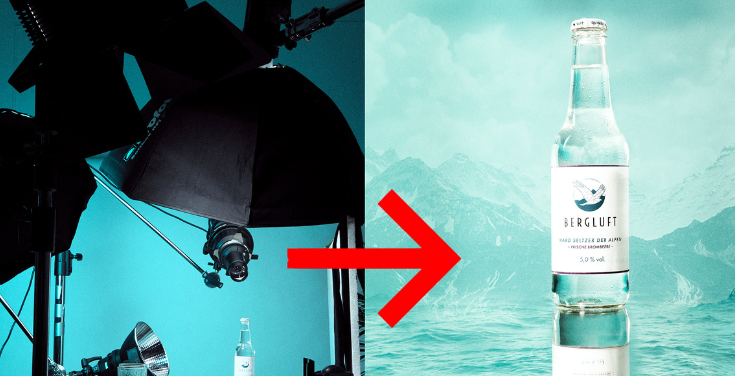
In e-commerce, where customers cannot physically interact with products, imagery becomes the bridge between mere interest and the final purchase.
The art of product photography is pivotal in crafting this virtual experience. Well-executed images can capture the essence of a product, inviting potential customers to visualize it in their lives.
1. Understanding the Significance of Product Photography
First Impressions Count:
A product’s image is often the first interaction a customer has with your brand. It serves as a visual handshake, where the quality, aesthetics, and professionalism reflected in the photo can either make or break the sale.
Conveying Value:
High-quality images showcase the finer details, craftsmanship, and features of your product, subtly communicating its value proposition.
2. Essential Elements of Product Photography
Lighting is the the make or break factor in product photos.
- Natural Light: Ideal for beginners and cost-effective setups. Natural light softens the appearance of the product, eliminating harsh shadows.
- Studio Light: Professional setups with controlled lighting allow for precision and consistency across multiple shots.
Background: The Canvas
- White Backgrounds: Amazon and many e-commerce platforms prefer clean, white backgrounds to maintain uniformity and emphasize the product.
- Contextual Backgrounds: Placing the product in a real-life setting helps potential buyers visualize its use.
Angles and Perspectives: Showcasing Dimensions
- Multiple Angles: Capture your product from various angles to provide a comprehensive visual understanding.
- Close-Ups: Zoom in on unique features or craftsmanship.
3. Styles of Product Photography
- Hero Shots: These are the primary images seen on your listing. They should be clear, well-lit, and centered, portraying the product in its best light.
- Example: A hero shot of a coffee maker would focus on the design, ensuring clarity and sharpness.
Lifestyle Shots
These images showcase the product in action or in an environment where it could be used.
Example: The same coffee maker could be shown on a cozy kitchen countertop with a steaming cup of coffee beside it.
Scale Shots
These help convey the size and proportion of the product.
Example: The coffee maker could be photographed next to commonly known items like a mug or a toaster.
Detail Shots
These focus on the unique features, texture, or craftsmanship of the product.
Example: A close-up of the coffee maker’s control panel or the texture of its material.
4. Post-Processing: Polishing the Gem
- Editing Software: Tools like Adobe Photoshop or Lightroom can enhance your images by adjusting lighting, color balance, and sharpness.
- Consistency is Key: Ensure that editing is consistent across all images for a cohesive look.
5. Technical Considerations
Resolution and Size: High-resolution images are preferred, but ensure they meet the specifications of the platform (like Amazon’s requirement for images to be at least 1000 pixels on the longest side).
File Format: JPEG is usually the preferred format due to its compatibility and quality.
6. Tips and Tricks
- Use a Tripod: This ensures stability and clarity.
- Experiment with Props: Sometimes, props can enhance the context but use them sparingly.
- Stay True to Color: Ensure that the product’s color is accurately represented.
7. Continual Learning and Experimentation
Photography is an art, and like any other art form, it requires continual learning and experimentation. Stay updated with trends, invest in good equipment as you progress, and don’t shy away from trying new techniques.
Conclusion
Mastering the art of product photography can dramatically impact your sales by enhancing the perceived value and desirability of your products. By paying attention to details, experimenting, and continually refining your skills, you can create images that not only drive sales but also build your brand’s identity in the crowded e-commerce space.
